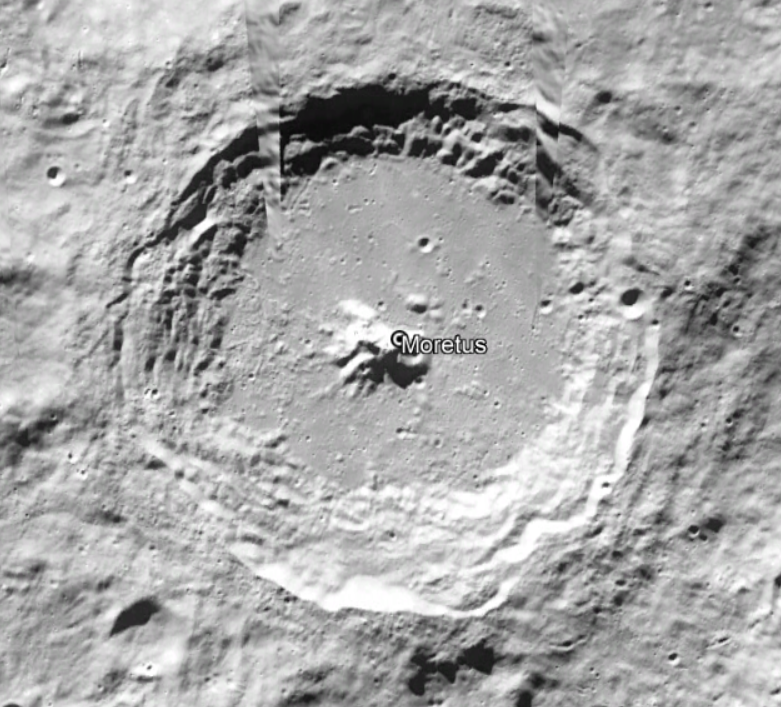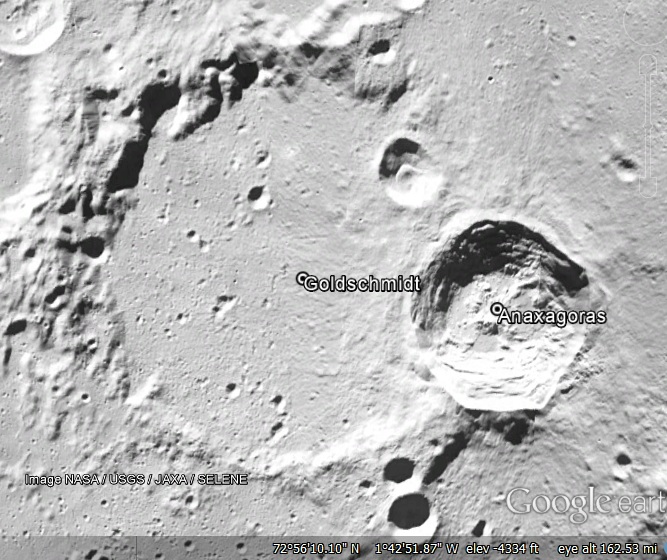It looks like you're using an Ad Blocker.
Please white-list or disable AboveTopSecret.com in your ad-blocking tool.
Thank you.
Some features of ATS will be disabled while you continue to use an ad-blocker.
16
share:
I present some backyard footage taken with a Celestron AstroMaster 130 + iPhone 11.
In the footage you can see the southern hemisphere of the Moon and a large crater with something large inside it reflecting light and creating a shadow on the rim. I tried to look through topographic maps but did not find anything in correspondense.
Is this a crater peak? Or…
In the footage you can see the southern hemisphere of the Moon and a large crater with something large inside it reflecting light and creating a shadow on the rim. I tried to look through topographic maps but did not find anything in correspondense.
Is this a crater peak? Or…
originally posted by: djz3ro
a reply to: OnWhiteMars
Could it be the remains of the meteor that caused the crater?
Big mound of meteor mate.
I wonder at the colour of it.
a reply to: OnWhiteMars
Looks to me like a shadow of the central peak.
If you look slightly to the left you can see the tip of the peak is in sunlight.
Looks to me like a shadow of the central peak.
If you look slightly to the left you can see the tip of the peak is in sunlight.
a reply to: Spacespider
I'd hazard a guess that this is Moretus.
Apparently well know for its central peak.
I'd hazard a guess that this is Moretus.
Apparently well know for its central peak.
a reply to: Darkstar2
Yep, Moretus and it's central peak. Here it is shown next to a still from the video:

en.wikipedia.org...(crater)
Yep, Moretus and it's central peak. Here it is shown next to a still from the video:

en.wikipedia.org...(crater)
As others have mentioned, it's a mountain inside the crater.
Craters, especially large ones, often have what is called a central uplift mountain in the center. It's from the land rebounding during the impact event that created the crater. At the moment of impact, the high energies involved make the rocky crust act like a plastic ("plastic" as in pliable and ductile).
It is something like the rebound in the middle of dripping water:
Craters, especially large ones, often have what is called a central uplift mountain in the center. It's from the land rebounding during the impact event that created the crater. At the moment of impact, the high energies involved make the rocky crust act like a plastic ("plastic" as in pliable and ductile).
It is something like the rebound in the middle of dripping water:
edit on 6/29/2021 by Soylent Green Is People because: (no reason given)
Moretus - A mosaic courtesy of Google Moon.

Interestingly, the size range for craters having a central peak is surprisingly tight. Although there are exceptions, we generally only see central peaks in craters 30 - 70 miles from rim to rim. Below that, the heat of the impact is dissipated by the blast, leaving a bowl-shaped crater. Above that the impact melt stays hot enough long enough to melt the central peak like an ice cube in water, leaving large, flat-bottomed craters.


originally posted by: Soylent Green Is People
Craters, especially large ones, often have what is called a central uplift mountain in the center. It's from the land rebounding during the impact event that created the crater. At the moment of impact, the high energies involved make the rocky crust act like a plastic ("plastic" as in pliable and ductile).
Interestingly, the size range for craters having a central peak is surprisingly tight. Although there are exceptions, we generally only see central peaks in craters 30 - 70 miles from rim to rim. Below that, the heat of the impact is dissipated by the blast, leaving a bowl-shaped crater. Above that the impact melt stays hot enough long enough to melt the central peak like an ice cube in water, leaving large, flat-bottomed craters.

a reply to: Dalamax
Looks like representative examples of impact phenomenon, as explained in my post.
How would you differentiate between impact effects and electric arc effects?
Be specific.
Impact events and their results have been observed for a long time. The mechanism (objects colliding at high speed) is simple, common, measured, reproducible and well-understood.
Super-powerful electric arc phenomenon capable producing craters with raised rims miles deep and tens of miles across have never been observed, and there is no known mechanism for generating such arcs based on the information we have gathered about the space environment over the last 60+ years. There is no support for the idea other than "it looks like it" even though geologists and physicists can explain in detail all of the features that indicate an impact origin.
Looks like representative examples of impact phenomenon, as explained in my post.
How would you differentiate between impact effects and electric arc effects?
Be specific.
Impact events and their results have been observed for a long time. The mechanism (objects colliding at high speed) is simple, common, measured, reproducible and well-understood.
Super-powerful electric arc phenomenon capable producing craters with raised rims miles deep and tens of miles across have never been observed, and there is no known mechanism for generating such arcs based on the information we have gathered about the space environment over the last 60+ years. There is no support for the idea other than "it looks like it" even though geologists and physicists can explain in detail all of the features that indicate an impact origin.
edit on 2-7-2021 by Saint Exupery because: (no reason given)
new topics
-
American-Jewish Journalist says that Israel is committing war crimes in Gaza
Education and Media: 1 hours ago -
The Dark Pyramid of Alaska and the Why Files take on the subject
Whistle Blowers and Leaked Documents: 2 hours ago -
Israeli strikes on southern Gaza city of Rafah kill 22, mostly children, as US advances aid package
Middle East Issues: 9 hours ago
top topics
-
Leading Surgeon from Al-Shifa Hospital Dies in Israeli Custody
Middle East Issues: 17 hours ago, 9 flags -
The Dark Pyramid of Alaska and the Why Files take on the subject
Whistle Blowers and Leaked Documents: 2 hours ago, 6 flags -
Israeli strikes on southern Gaza city of Rafah kill 22, mostly children, as US advances aid package
Middle East Issues: 9 hours ago, 5 flags -
The Vaccine Injured
Medical Issues & Conspiracies: 14 hours ago, 4 flags -
Really Unexplained
Paranormal Studies: 14 hours ago, 4 flags -
American-Jewish Journalist says that Israel is committing war crimes in Gaza
Education and Media: 1 hours ago, 2 flags
active topics
-
American-Jewish Journalist says that Israel is committing war crimes in Gaza
Education and Media • 27 • : burritocat -
France makes abortion a constitutional right in historic vote
Other Current Events • 300 • : burritocat -
So I saw about 30 UFOs in formation last night.
Aliens and UFOs • 47 • : Ophiuchus1 -
The Vaccine Injured
Medical Issues & Conspiracies • 14 • : Tresky -
The Dark Pyramid of Alaska and the Why Files take on the subject
Whistle Blowers and Leaked Documents • 1 • : BeyondKnowledge3 -
New Bombshell Evidence Strongly Suggests Trump was Set Up in Classified Docs Saga
US Political Madness • 66 • : Vermilion -
Lawsuit Seeks to ‘Ban the Jab’ in Florida
Diseases and Pandemics • 39 • : IndieA -
The Pentagon is lying about UFOs
Aliens and UFOs • 22 • : anthelion -
Hard evidence of a Royal plot on the US....if only i had proof.
ATS Skunk Works • 97 • : Solvedit -
Leading Surgeon from Al-Shifa Hospital Dies in Israeli Custody
Middle East Issues • 48 • : SteamyAmerican
16

